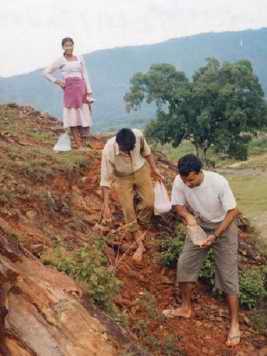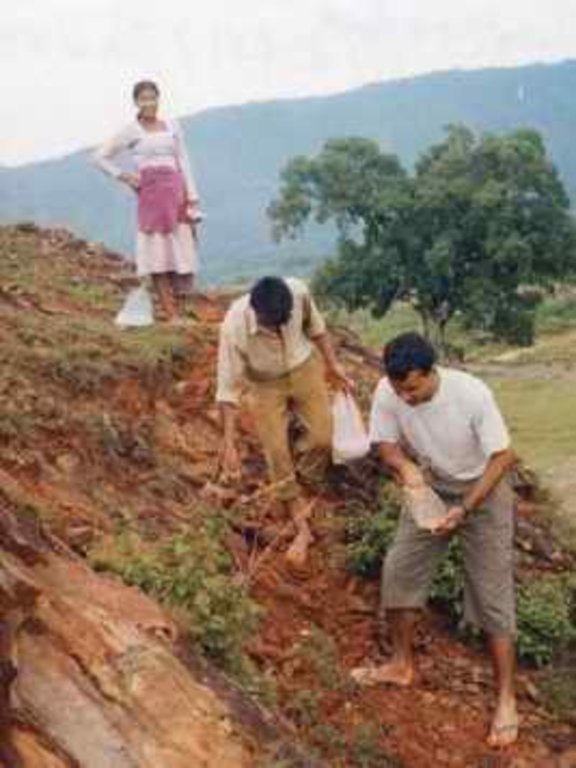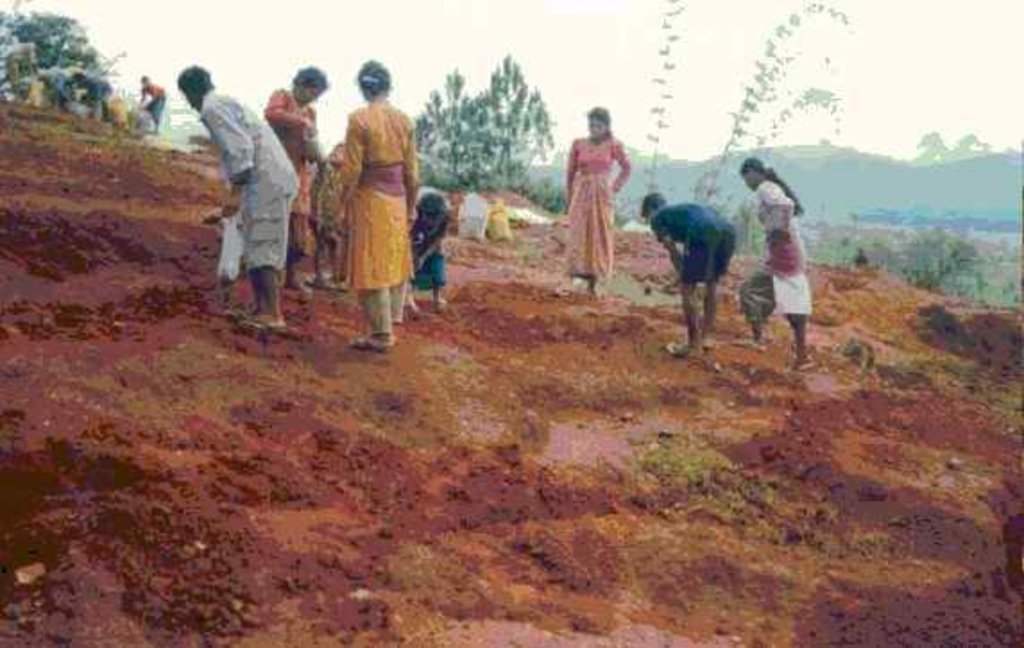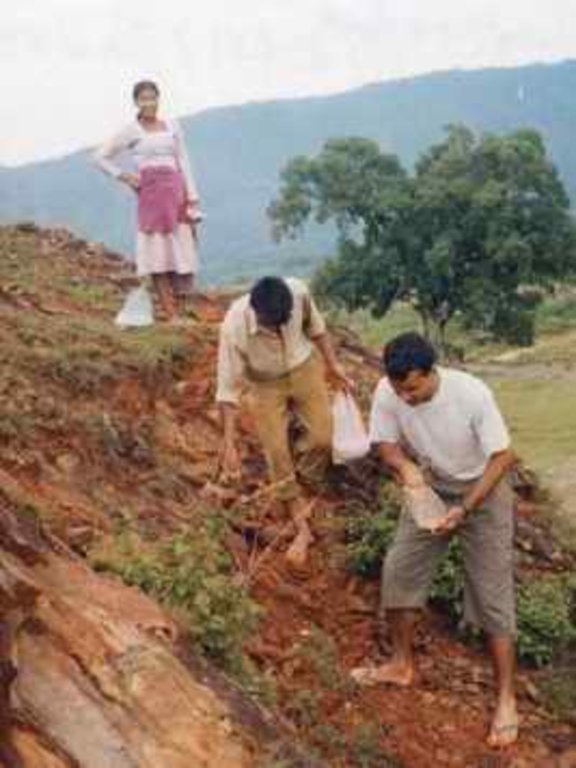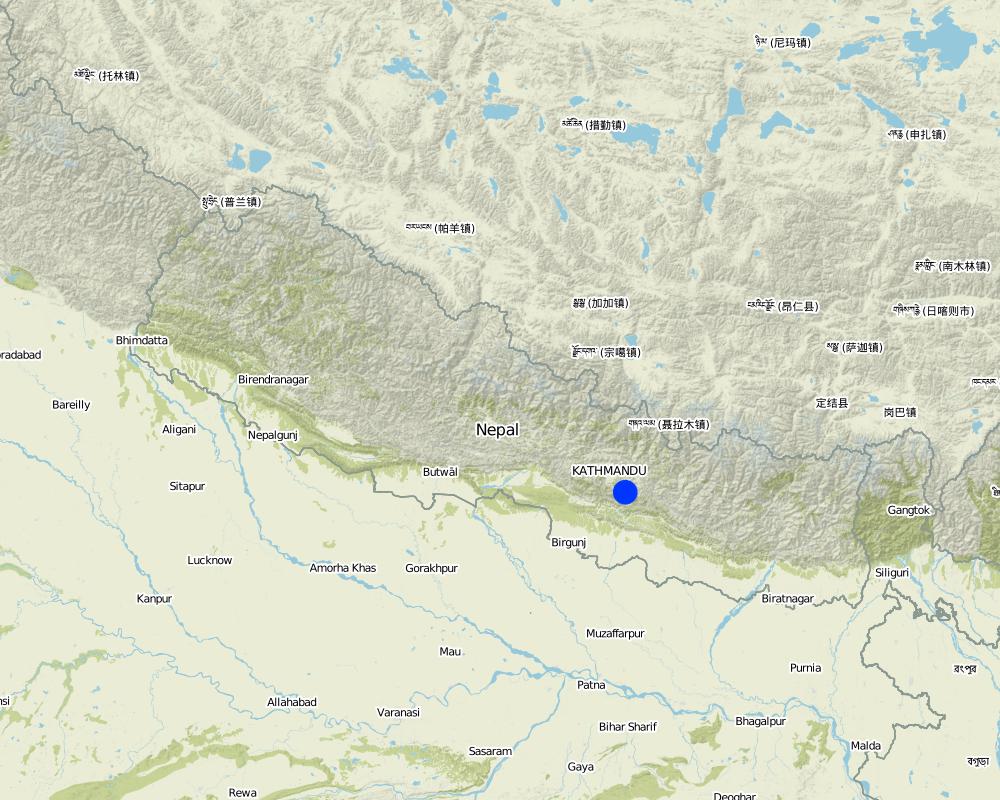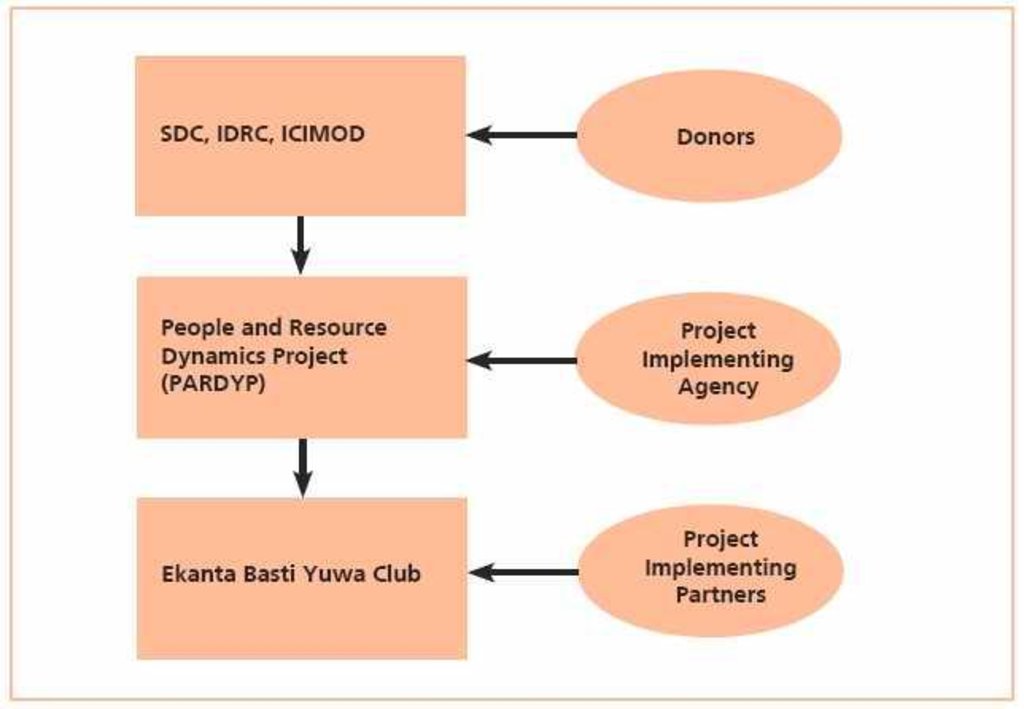Local initiatives for rehabilitating degraded communal grazing land [Nepal]
- Criação:
- Atualização:
- Compilador/a: Madhav Dhakal
- Editor: –
- Revisor: Fabian Ottiger
Kshetigrasta samudayik charan bhumi punarutthan ma sthaniya agrasarata (Nepali)
approaches_2353 - Nepal
Veja as seções
Expandir tudo Recolher tudo1. Informação geral
1.2 Detalhes do contato das pessoas capacitadas e instituições envolvidas na avaliação e documentação da abordagem
Especialista em GST:
Nome da(s) instituição(ões) que facilitou(ram) a documentação/avaliação da Abordagem (se relevante)
CDE Centre for Development and Environment (CDE Centre for Development and Environment) - SuíçaNome da(s) instituição(ões) que facilitou(ram) a documentação/avaliação da Abordagem (se relevante)
ICIMOD International Centre for Integrated Mountain Development (ICIMOD) - Nepal1.3 Condições em relação ao uso da informação documentada através de WOCAT
O/a compilador/a e a(s) pessoa(s) capacitada(s) aceitam as condições relativas ao uso de dados documentados através da WOCAT:
Sim
1.4 Referência ao(s) questionário(s) sobre tecnologias da GST
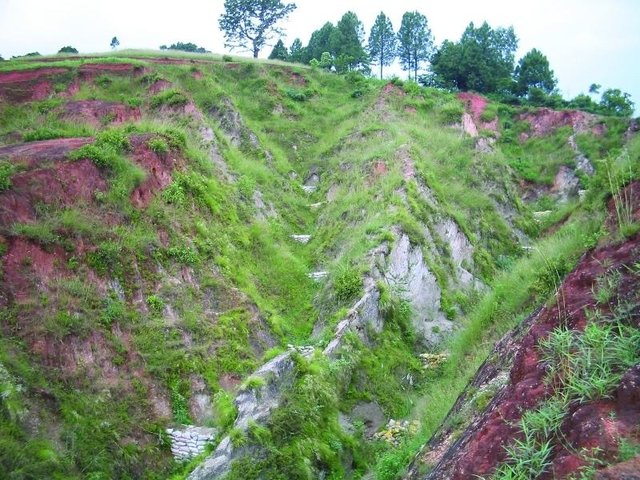
Gully plugging using check dams [Nepal]
Small dam structures constructed across erosion gullies
- Compilador/a: Nicole Guedel
2. Descrição da abordagem de GST
2.1 Descrição curta da abordagem
Supporting local initiatives and building local capacity for the rehabilitation of degraded communal land in the middle mountains of Nepal.
2.2 Descrição detalhada da abordagem
Descrição detalhada da abordagem:
Aims / objectives: The main aim of the People and Resource Dynamics Project's (PARDYP) land rehabilitation activities were to help watershed residents, local groups, and line agencies understand the key issues and to test options for the improved management of water, land, and forests in a participatory way. In Dhotra VDC (Kavrepalanchok district) a local youth club (Ekantabasti Youth Club) had been trying to rehabilitate a 2.5 ha area of degraded communal land since May 2004. The club approached PARDYP for technical assistance. The area had been degraded by overgrazing with two big gullies formed and small landslips along the gullies affecting a trail and the adjoining agricultural land. An unsuccessful attempt had been made to plant the area eight years previously. It had failed due to the difficulty of retaining soil moisture in the area's compacted red soils. A series of meetings were organised to plan future activities, to ensure community participation, and to share responsibilities among local users and PARDYP. The community was committed to rehabilitating the area and took the responsibility for planting, protection, and overall management of the planted species. PARDYP provided planting materials and technical help. A needs assessment with the local people identified the most useful tree species. They entrusted the selection of appropriate grass and hedgerow species to the project's expertise. Project staff arrange for planting materials and logistical support, and showed villagers how to make eyebrow pits, plant hedgerows, and plug gullies. About 450 villagers participated in the rehabilitation activities with women contributing more than half of the labour. They worked four hours a day for 16 mornings.
Methods: A five-women strong user committee was formed to manage and protect the planted species and a five-man strong task force was set up to maintain regular links and coordination between the user committee, the youth club, and the villagers. The coordination committee, with guidance from the youth club, was responsible for facilitating and coordinating all the second season rehabilitation work in 2005.
2.3 Fotos da abordagem
2.5 País/região/locais onde a abordagem foi aplicada
País:
Nepal
Especificação adicional de localização:
Kavrepalanchowk/ Jhikhu khola watershed
Map
×2.6 Datas de início e término da abordagem
Ano de término (caso a abordagem não seja mais aplicada):
2005
2.7 Tipo de abordagem
- Baseado em projeto/programa
2.8 Principais metas/objetivos da abordagem
The Approach focused on SLM only
- To demonstrate appropriate technologies for rehabilitating degraded land and evaluating their effectiveness. - To provide training on soil and water conservation (SWC) technologies for effectively implementing the rehabilitation activities and to build the capacity of the local community to carry out the work. - To organise and mobilise a local community for implementing, protecting and managing the planted areas and the physical structures
The SLM Approach addressed the following problems: - Lack of awareness about low cost soil and water conservation technologies that address farmers' needs. - Weak institutional collaboration for developing and implementing technologies
2.9 Condição que propiciam ou inibem a implementação de tecnologia/tecnologias aplicada(s) segundo a abordagem
Disponibilidade/acesso a recursos e serviços financeiros
- Inibitivo
Government incentives lacking
Treatment through the SLM Approach: Cost-effective technology demonstrated; planting materials and other logistic support provided
Quadro institucional
- Inibitivo
Weak institutional collaboration for technology development and demonstration
Treatment through the SLM Approach: Collaboration with local youth club; formation of user committee and task force
Quadro jurídico (posse de terra, direitos de uso da terra e da água)
- Inibitivo
The existing land ownership, land use rights / water rights hindered a little the approach implementation The land is owned by the state and prior to starting the work there was a conflict over where the boundaries lay. Adjacent private landowners illegally claimed a part of the land but withdrew their claims before the rehabilitation work started. The existing land ownership and land use rights hindered the implementation of the approach at the beginning.
Conhecimento sobre GST, acesso a suporte técnico
- Inibitivo
Limited knowledge of appropriate SWC technologies and limited technical know-how to implement them
Treatment through the SLM Approach: On-site training and exchange visits organised to demonstration sites
3. Participação e papel das partes interessadas envolvidas
3.1 Partes interessadas envolvidas na abordagem e seus papéis
- Usuários de terra/comunidades locais
Planning, implementing SLM activities and protection. Men and women worked equally. About 450 villagers participated in the rehabilitation activities. Women's participation was a little higher, they provided 56% of the labour.
- Especialistas em GST/ consultor agrícola
- Organização não governamental
Technical and logistics support
- Governo nacional (planejadores, responsáveis pelas decisões)
Caso várias partes interessadas foram envolvidas, indique a agência líder:
Initiation and implementation by local youth club representing land users. Technical and logistics support by national specialists
3.2 Envolvimento do usuários de terra/comunidades locais nas diferentes fases da abordagem
| Envolvimento do usuários de terra/comunidades locais | Especifique quem estava envolvido e descreva as atividades | |
|---|---|---|
| Iniciação/motivação | Participativo | Local youth club approached PARDYP for technical help during a meeting. |
| Planejamento | Participativo | Public meetings organised to share responsibilities. Land users took responsibility for land preparation, planting, protection, grazing control, and overall management of planted species. Men and women performed planned activities together. Construction of eyebrow pits done mostly by men. Filling o |
| Implementação | Automobilização | Self-mobilised group under leadership of youth club implemented the activities; technical guidance during implementing period provided by project |
| Monitoramento/avaliação | Participativo | Survival of planted species, effect of eyebrow pits, performance of species and check dams were monitored/observed. Results shared in public meetings and reported to the project |
| Research | Nenhum |
3.3 Fluxograma (se disponível)
Descrição:
PARDP project donors and implementing partners: SDC: (Swiss Agency for Development and Cooperation); IDRC (Internat. Development Research Centre); ICIMOD
Autor:
Dhakal Madhav
3.4 Decisão sobre a seleção de tecnologia/tecnologias de GST
Especifique quem decidiu sobre a seleção de tecnologia/tecnologias a serem implementadas:
- Principalmente especialistas em GST, após consulta com usuários da terra
Explique:
A local youth club (Ekantabasti youth club) has initiated rehabilitation activities on the degraded communal land since May 2004. The youth club approached PARDYP for the technical assistance.
Decisions on the method of implementing the SLM Technology were made by mainly by land users supported by SLM specialists. Villagers took the responsibility for planting, protecting, and overall management of the planted species. PARDYP arranged planting materials and technical support
4. Suporte técnico, reforço das capacidades e gestão do conhecimento
4.1 Reforço das capacidades/ formação
Foi oferecida formação aos usuários da terra/outras partes interessadas?
Sim
Especifique quem foi capacitado:
- Usuários de terra
Tipo de formação:
- Áreas de demonstração
Assuntos abordados:
On-site training sessions were organised for establishing the eyebrow pits, contour hedgerows, gully treatments, and check dams and their maintenance.
4.2 Serviço de consultoria
Os usuários de terra têm acesso a um serviço de consultoria?
Sim
Especifique se foi oferecido serviço de consultoria:
- nas áreas dos usuários da terra
Descreva/comentários:
Name of method used for advisory service: Rehabilitation of degraded land thorough demonstration and training; Key elements: On site training, Demonstration, Exchange visits and public meetings; After implementing the technology, a number of exchange and interaction, audio visual presentation, and monitoring programmes were carried out as a scaling up strategy.
Advisory service is quite adequate to ensure the continuation of land conservation activities; Trained human resources can continue the activities.
4.3 Fortalecimento da instituição (desenvolvimento organizacional)
As instituições foram fortalecidas ou estabelecidas através da abordagem?
- Sim, moderadamente
Especifique a que nível (níveis) as instituições foram fortalecidas ou estabelecidas:
- Local
Especifique o tipo de apoio:
- Reforço das capacidades/ formação
Dê mais detalhes:
Technical training was provided to local youth club.
4.4 Monitoramento e avaliação
Monitoramento e avaliação são partes da abordagem?
Sim
Comentários:
bio-physical aspects were ad hoc monitored through observations; indicators: soil type and texture
technical aspects were regular monitored through measurements; indicators: performance of planted species and their survival rates
socio-cultural aspects were ad hoc monitored through observations; indicators: preferred tree species and closing the area for grazing
economic / production aspects were ad hoc monitored through observations; indicators: seed and grass production
no. of land users involved aspects were ad hoc monitored through observations; indicators: participation in maintaining planted species and structures
There were no changes in the Approach as a result of monitoring and evaluation: The users increased the size of the eyebrow pits and dug new pits and extended the hedgerow lines to fill in gaps; but the overall approach was not changed.
4.5 Pesquisa
A pesquisa foi parte da abordagem?
Sim
Especifique os tópicos:
- Tecnologia
Dê mais detalhes e indique quem realizou a pesquisa:
Research was not a major focus of the approach although the performance and survival rates of planted species, and performance of eyebrow pits and connecting drainage trenches were regularly observed.
Research was carried out on-farm
5. Financiamento e apoio material externo
5.1 Orçamento anual para o componente de GST da abordagem
Caso o orçamento exato seja desconhecido, indique a faixa:
- < 2.000
Comentários (p. ex. principais fontes de recursos/principais doadores):
Approach costs were met by the following donors: international (SDC, IDRC, ICIMOD): 90.0%; local community / land user(s) (materials and tools for training): 10.0%
5.3 Subsídios para entradas específicas (incluindo mão-de-obra)
- Agrícola
| Especifique quais entradas foram subsidiadas | Em que medida | Especifique os subsídios |
|---|---|---|
| Sementes | From projects own seed bank | |
| Seedlings | Parcialmente financiado | Some locally arranged and some from forest departm |
Se a mão-de-obra pelos usuários da terra foi uma entrada substancial, isso foi:
- Voluntário
Comentários:
Land users involvement was fully voluntary, they worked together in a cooperative spirit to improve their common degraded land.
5.4 Crédito
Foi concedido crédito segundo a abordagem para atividades de GST?
Não
6. Análise de impactos e declarações finais
6.1 Impactos da abordagem
A abordagem auxiliou os usuários da terra a implementar e manter as tecnologias de GST?
- Não
- Sim, pouco
- Sim, moderadamente
- Sim, significativamente
An organized land users' group was formed, and awareness on SLM increased.
A abordagem melhorou as questões de posse de terra/diretos do usuário que inibiam a implementação das tecnologias de GST?
- Não
- Sim, pouco
- Sim, moderadamente
- Sim, significativamente
Project requested the users to solve the problem before rehabilitation work, users community and private land users solved the issue by measuring area of the community land. An authorized technician from the government office helped solving the issue.
Did other land users / projects adopt the Approach?
- Não
- Sim, pouco
- Sim, moderadamente
- Sim, significativamente
The approach adopted during rehabilitation activities is quite standard and is taken by many other land management and community development projects.
6.2 Principal motivação dos usuários da terra para implementar a GST
- Consciência ambiental
reduction of soil erosion
- Melhoria estética
to maintain greenery.
6.3 Atividades de sustentabilidade de abordagem
Os usuários da terra podem manter o que foi implementado através da abordagem (sem apoio externo)?
- Incerto
Caso negativo ou incerto, especifique e comente:
Land users planned to upscale the technology and its related approach to rehabilitate the degraded areas of their community forest but it hasn't happened yet.
6.4 Pontos fortes/vantagens da abordagem
| Pontos fortes/vantagens/oportunidades na visão do usuário da terra |
|---|
| Suitable technologies were shared and valuable knowledge given during the rehabilitation work (How to sustain/ enhance this strength: Continue this incorporating new ideas) |
| Community institution strengthened, and some money (US$ 17) raised by selling grasses and grass seed within two years of rehabilitation. Money used for social activities (How to sustain/ enhance this strength: As above) |
| Pontos fortes/vantagens/oportunidades na visão do/a compilador/a ou de outra pessoa capacitada |
|---|
| Site visits and focus group discussion meetings were effective for disseminating and scaling up the approach (How to sustain/ enhance this strength: Continue these initiatives on a regular basis to strengthen land users??? involvement in SLM activities) |
| Among total participants, women's participation was higher. User committee was made up of just women (How to sustain/ enhance this strength: Continue this) |
| The local youth club played a key role in rehabilitation activities - a key factor for sustainability and continuity (How to sustain/ enhance this strength: More local institutions should be identified and involved.) |
| This is a bottom-up approach with the rehabilitation activities purely demand driven. Farmers' priorities for tree species to be planted were identified in a participatory way (How to sustain/ enhance this strength: Continue by including new priorities) |
6.5 Pontos fracos, desvantagens da tecnologia e formas de superá-los
| Pontos fracos/desvantagens/riscos na visão do usuário da terra | Como eles podem ser superados? |
|---|---|
| Research was not a main focus of the activity, and not enough options were explored. | Explore and test more options |
| Pontos fracos/vantagens/riscos na visão do/a compilador/a ou de outra pessoa capacitada | Como eles podem ser superados? |
|---|---|
| Collaboration with government line agencies was lacking | Rehabilitation work should be carried out involving all main stakeholders |
7. Referências e links
7.1 Métodos/fontes de informação
- visitas de campo, pesquisas de campo
- entrevistas com usuários de terras
7.2 Referências às publicações disponíveis
Título, autor, ano, ISBN:
ICIMOD (2007) Good Practices in Watershed Management, Lessons Learned in the Mid Hills of Nepal. Kathmandu: ICIMOD
Disponível de onde? Custos?
ICOMOD
Links e módulos
Expandir tudo Recolher tudoLinks

Gully plugging using check dams [Nepal]
Small dam structures constructed across erosion gullies
- Compilador/a: Nicole Guedel
Módulos
Não há módulos


